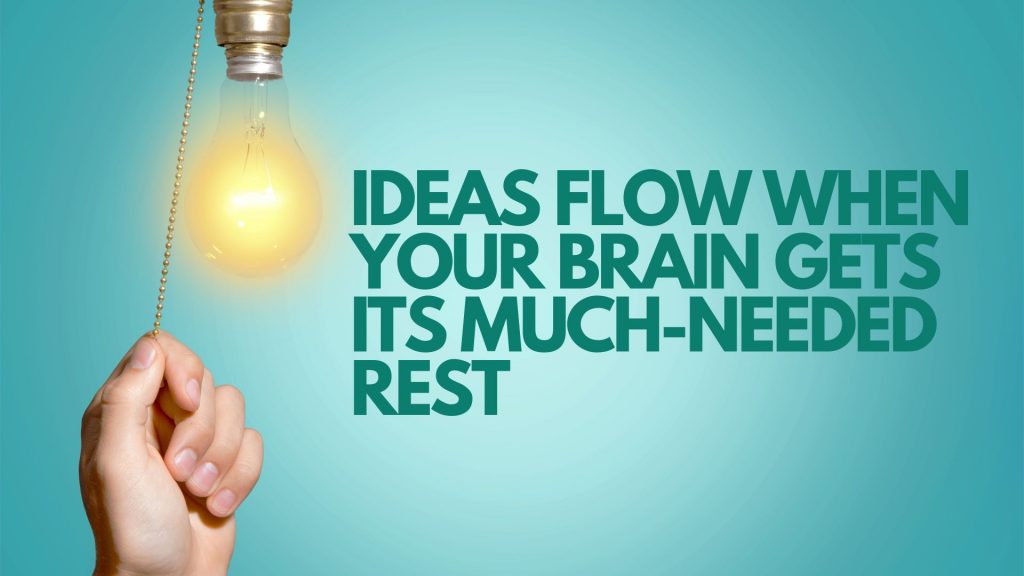We all have different thoughts about downtime, and how it should be spent. Truth be told, there is no universal rule on how one should take advantage of it. If there is, could those who follow it raise their hands? None? Okay, moving along. It’s not to say that there is no use in following instructions when it comes to spending our downtime. There are simply things that have been proven effective, and perhaps, they could also be effective for you. If there is anything we would like to impart to you, it’s how you can make the most out of that little time for ‘rest’ without harming your daily routine—ultimately affecting your chances of succeeding in anything you do. Too much of anything could be bad, and sometimes, the consequences of overindulging could cause us irreversible things.
But wait, what’s the difference between downtime and rest? Technically, they are the same. In some cases, downtime isn’t necessarily just resting. It’s simply the absence of action or activity either due to operational stoppage like when you are waiting for the next task to execute or at work, perhaps a system maintenance where you are forced to not do anything. Think of downtime as rest spurts scattered throughout the day. At work, we usually have an accumulated 1.5 hours of rest, two 15-minute breaks, and an hour for lunch. For downtime, it could happen every after you finish a task.
WHY DO I NEED DOWNTIME AGAIN?

Have you ever compared your performance when you work continuously, with no breaks, versus when you schedule downtime while working? Scientists and researchers have proven that allotting time off and scheduling downtime contributes to your success. In the article linked above, recent research suggests that our brain operates optimally when it toggles between focus and unfocus.
Aside from processing and interpreting every stimulus we receive daily, our brain’s ultimate function is to keep us focused. On average, our brain can only focus for a good 45 minutes. The key to acing anything you do is by making the most out of the time your brain can focus and letting loose thereafter.
Our brain needs multiple downtimes in a day to reach its optimum level of performance. You might have experienced working for countless hours and start feeling like you are already slowing down, or things are starting to become harder to absorb. Usually, this is the signal our brain sends to our body that it needs to rest because it already reached its peak. Thrusting through it, as most of us do, can become counterproductive.
WHAT TO DO, THEN?

The Harvard Business Review article referenced above describes a part of our system called Default Mode Network (DMN). It’s a brain circuit that activates new ideas and combines them while you are practically Doing Mostly Nothing, get it? The article also suggests three things to activate this brain circuit and be productive while resting. It suggests taking a nap, using positive constructive daydreaming (PCD), and pretending to be someone else as effective ways of getting the DMN to work.
Positive Constructive Daydreaming (PCD): Many of us daydream, and some do it way more often than usual. Since the DMN also connects past, present, and future ideas, it helps us enhance our self-awareness which is vital for leadership. Through PCD, we allow ourselves to swim along the ocean of our memories, reach deeper parts, and re-emerge with a renewed sense of self. So, during your downtime, pick a book or a sketch pad, and let your thoughts flow.

Taking a nap: Depending on how long you nap, it serves a specific purpose with the goal of optimizing your brain. When utilized properly, this simple downtime can spark up thoughts, memories, and ideas that are stored in the corners of your brain.
Pretending to be someone else: We call it role-playing. Don’t we just love putting ourselves in the shoes of our favorite people? In times of trouble, we sometimes wonder what others would do if they were in our situation. You can call it new perspective, if you want. Pretending to be someone else to squeeze out ideas that our brains may have a hard time tapping is a clever way of getting things done. The next time you experience a creative deadlock, get yourself out of your own head to save the day.


